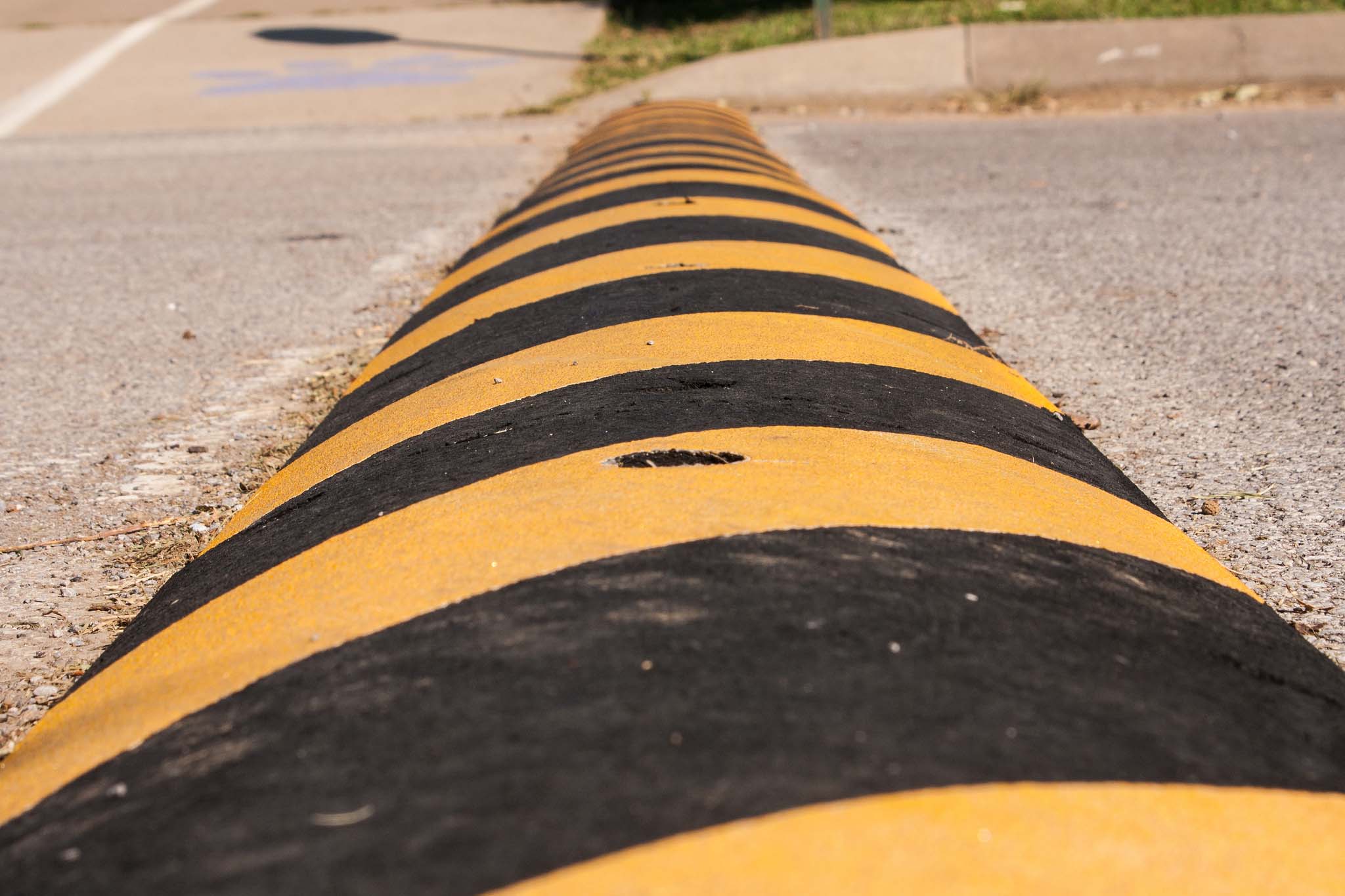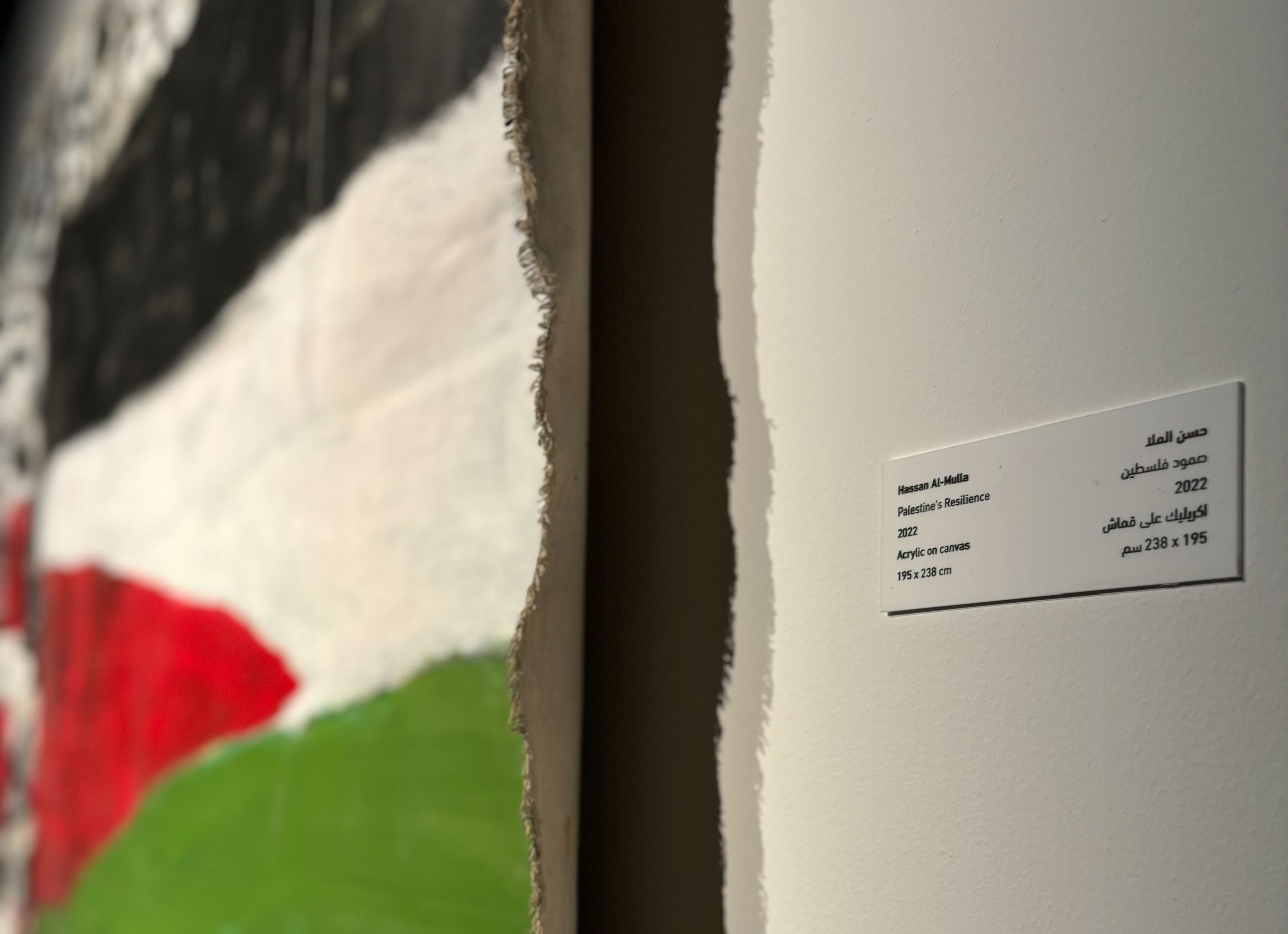
Jassim Al Khenji, 49, told Doha News that he has developed an “elastic speed bump” that could be used on local residential roads and in school zones.
Equipped with steel springs, the device is depressed by the weight of a slow-moving car at it passes over the speed bump, which then returns to its original position.

Speed bumps, humps and ramps are traffic-calming measures aimed at encouraging motorists to drive at slower speeds. However, they can damage vehicles – especially sports cars that are low to the ground – if they are too tall or are positioned at too steep of an angle.
According to Al Khenji, speed bumps are across the country vary widely in terms of their effectiveness:
“The speed bumps in Doha are random, with no unified shape or form,” he says, adding that he has seen drivers disrupting traffic by attempting to drive around the bumps or cross it diagonally.
Illegal speed bumps
Qatar’s public works authority, Ashghal, does have some standards for both speed bumps and their flat-topped cousins, “speed tables.”
These can be seen at Hamad International Airport and have a wide flat surface to facilitate pedestrian crossing.
An Ashghal official previously told Al Raya that speed bumps should be no less than 200m from one another, be colored black and yellow and preceded by warning signs for motorists.

“Many of the speed bumps are built (illegally) without the knowledge of the traffic authority or (Baladiya),” he said.
An Ashghal-affiliated committee was established last month to tackle the problem of individuals and businesses building unauthorized speed bumps, according to Al Raya.
There are no official statistics on the number of speed bumps in Qatar, but Al Khenji estimated that the country has approximately 5,000 of them.
Tests planned
Al Khenji, a father of four who would tinker with TVs and other electronics in his father’s repair shop as a boy, already has several safety and security inventions to his name.

The 49-year-old accountant by trade said his speed bumps have received positive feedback from government officials and been tentatively approved for limited testing on Qatar’s streets.
“As an idea, it’s excellent, but we need to experiment it and see how practical it will be,” he said.
He added that steel springs are readily available in Doha and can be easily maintained, installed and changed, which would make a wide-scale rollout easy.
He also argued that his solution is cost-effective. His prototypes are priced at approximately QR6,000 (US$1,648) each and are currently being built by local firm Shift Rubber free of charge.
If manufacturing were ramped up to commercial quantities, Al Khenji said he believes the cost could be brought down to roughly QR1,000 ($275) each, which is close to the price of a conventional speed bump.
While Al Khenji said his invention is unique, a similar concept – albeit with a high-tech twist – has been tested in the UK and the US.
So-called “green” speed bumps generate electricity as vehicles press down on the traffic-calming devices, but come at a much steeper price of between £20,000 (QR112,517) and £55,000 (QR309,340) for each one, the Guardian reported in 2009.
Thoughts?







